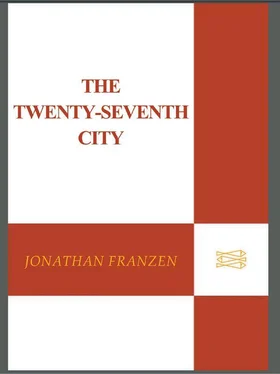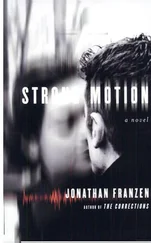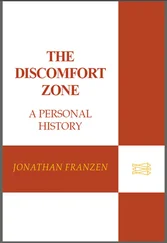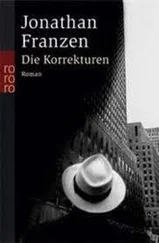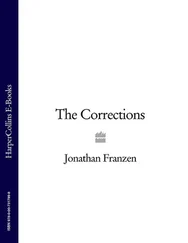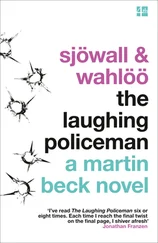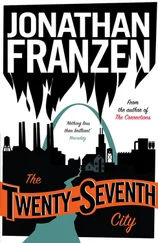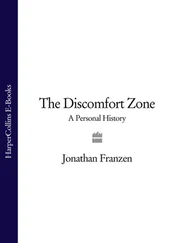In 1875, with local prophets casting it as the nation’s natural capital, the eventual First City, St. Louis undertook to remove a major obstacle from its path. The obstacle was St. Louis County, the portion of Missouri to which the city nominally belonged. Without the city, St. Louis County was nothing — a broad stretch of farmland and forest in the crook of two rivers. But for decades the county had dominated city affairs by means of an archaic administrative body called the County Court. The Court’s seven “judges” were notoriously corrupt and insensitive to urban needs. A county farmer who wanted a new road built to his farm could buy one cheap for cash or votes. But if parks or streetlights were needed for the city’s common good, the Court had nothing to offer. To a young frontier town the Court’s parochialism had been frustrating; to the Fourth City, it was intolerable.
A group of prominent local businessmen and lawyers persuaded the framers of a new Missouri state constitution to include provisions for civic reform. Despite harassment by the County Court, the group then drafted a scheme for the secession of St. Louis from St. Louis County, to be voted on by all county residents in August 1876.
Pre-election criticism focussed on one element of the scheme in particular: the expansion of the city’s landholdings, in a kind of severance payment, from the current twenty-one square miles to sixty-one square miles. Countyites objected to the city’s proposed “theft” of county property. The Globe-Democrat denounced the unfairness of annexing “divers and sundry cornfields and melon patches and taxing them as city property.” But the scheme’s proponents insisted that the city needed the extra room for tomorrow’s parks and industry.
In an election run by the County Court, voters narrowly rejected the secession scheme. There were cries of fraud. Activists had no trouble convincing a Circuit Court judge (one Louis Gottschalk, who had personally drafted the reform provisions for the 1875 constitution) to appoint a commission to investigate the election. In late December the commissioners reported their findings. The scheme had passed after all, by 1,253 votes. Immediately the city claimed its new land and adopted a new charter, and five months later the County Court, its appeals exhausted, dissolved itself.
Time passed. Sixty-one square miles of land soon proved to be less ample than the secessionists had supposed. As early as 1900 the city was running out of space, and the county refused to give it more. Old industry fled the messes it had made. New industry settled in the county. In the thirties, poor black families arrived from the rural South, hastening the migration of whites to the suburbs. By 1940 the city’s population had begun to plummet, and its tax base to shrink. Stately old neighborhoods became simply old. New housing projects like Pruit-Igoe, begun in the fifties, failed spectacularly in the sixties. Efforts at urban renewal succeeded in attracting affluent county residents to a few select zones but did little to cure the city’s ills. Everyone worried about the city’s schools, but it was an exercise in hand wringing. The seventies became the Era of the Parking Lot, as acres of asphalt replaced half-vacant office buildings downtown.
By now, of course, most American cities were in trouble. But compared with St. Louis, even Detroit looked like a teeming metropolis, even Cleveland like a safe place to raise a family. Other cities had options, good neighbors, a fighting chance. Philadelphia had land to work with. Pittsburgh could count on help from Allegheny County. Insular and constricted, St. Louis had by 1980 dwindled to America’s Twenty-Seventh City. Its population was 450,000, hardly half the 1930 figure.
The local prophets were defensive. Where once they’d expected supremacy, they now took heart at any sign of survival. For forty years they’d been chanting: “St. Louis is going to make it.” They pointed to the Gateway Arch. (It was 630 feet tall; you couldn’t miss it.) They pointed to the new convention center, to three tall new buildings and two massive shopping complexes. To slum-clearance projects, to beautification programs, to plans for a Gateway Mall that would rival the mall in Washington.
But cities are ideas. Imagine readers of The New York Times trying in 1984 to get a sense of St. Louis from afar. They might have seen the story about a new municipal ordinance that prohibited scavenging in garbage cans in residential neighborhoods. Or the story about the imminent shutdown of the ailing Globe-Democrat . Or the one about thieves dismantling old buildings at a rate of one a day, and selling the used bricks to out-of-state builders.
Why us?
Never conceding defeat, the prophets never asked. Nor did the old guiding spirits, whose good intentions had doomed the city; they’d moved their homes and operations to the county long ago. The question, if it arose at all, arose in silence, in the silence of the city’s empty streets and, more insistently, in the silence of the century separating a young St. Louis from a dead one. What becomes of a city no living person can remember, of an age whose passing no one survives to regret? Only St. Louis knew. Its fate was sealed within it, its special tragedy special nowhere else.
After his meeting with Jammu, Singh took the heavy Probst file to his West End apartment, read the file’s contents, called Baxti eight times for clarifications, and then, the following morning, drove out to Webster Groves for a visit to the scene of future crimes.
The Probsts lived in a three-story stucco house on a long, broad street called Sherwood Drive. Barbara Probst had driven off punctually. Tuesdays, like Thursdays, she worked in the acquisitions department of the St. Louis University Library, returning home at 5:30. Tuesday was also the gardener’s day off. When the beeping in Singh’s earphone had faded into static (Baxti had equipped Barbara’s BMW with a transmitter that had a range of one kilometer) he checked the two channels from the mikes inside the house and, finding everything quiet, approached on foot. During school hours pedestrians were as scarce on Sherwood Drive as in a cemetery.
Singh was dressed approximately like a gas-meter reader. He carried a black leather shoulder bag. Ready in his pocket were surgical latex gloves for fingerprint protection. He descended the rear stairs and entered the basement with the key Baxti had given him. Looking around, he was impressed by the great quantity of junk. In particular, by the many bald tires, the many plastic flower pots, and the many coffee cans. He went upstairs to the kitchen. Here the air had the smell of recent redecoration, the composite aroma of new wallpaper, new fabrics, new caulking and new paint. A dishwasher throbbed in its drying cycle. Singh removed the screen from the heating register above the stove, replaced the battery in the transmitter, adjusted the gain of the mike (Baxti never failed not to do so), replaced the screen, and repeated the procedure for the transmitter in the dining room.
Baxti had already gone through Probst’s study and Barbara’s desk and closets, the address books and cancelled checks and old correspondences, so Singh concentrated on the girl’s — Luisa’s — bedroom. He shot up six feet of microfilm, recording every document of interest. It was noon by the time he finished. He mopped his forehead with his shirtsleeve and opened a bag of M & M’s (they didn’t leave crumbs). He was chewing the last of them, two yellow ones, when he heard a familiar voice outside the house.
He moved to a front window. Luisa was walking up the driveway with a female friend. Singh entered the nearest spare bedroom, pushed his shoulder bag under the bed, and slid in after it, stilling the dust ruffle just as the girls entered the kitchen below him. He switched channels on his receiver and listened to their movements. Without speaking, they were opening the refrigerator and cabinets, pouring liquids into glasses and handling plastic bags. “Don’t eat those,” Luisa said.
Читать дальше
Конец ознакомительного отрывка
Купить книгу
